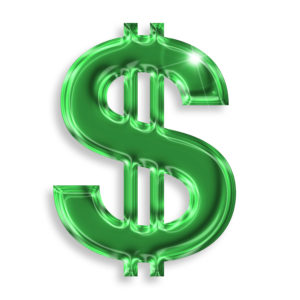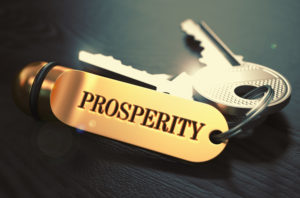April is Stress Awareness Month. April is also when taxes are due. Additionally, April is also Financial Literacy Month. This is no coincidence. As such, Financial wellness can enhance our overall well-being. Therefore, Self-care must include financial care.
 Financial Care is Self-Care
Financial Care is Self-Care
As it relates to self-care and well-being, we know that stress, and our response to it, plays a major role in our health and well-being. Money is one of stressors, and so therefore it stands to reason that financial self-care can go a long way in reducing stress. Given that money is also a top stressor in relationships and that money issues can cause relationship issues, which in turn becomes more stress, it really is worth considering what we can do to improve our overall well-being.
Disclaimer: Please note, that the topic of Finance is broad and there are lots of steps that individuals need to address for various financial situtations like saving for retirement or paying of debt or budget best practices. This post is not intended to cover those. There are whole blogs and books devoted to those items, as well as coaches and advisors.
Instead the purpose of this post is to discuss the topic of financial wellness as a component of overall well-being and self care. Knowledge is power, and knowledge is how you can take back control of a major (financial) stressor in your life. To do so, we begin with the elements of Money Mindfulness.

Practice Money Mindfulness
Many of the same principles of mindfulness can and should be applied to money. Here are 5 Money Mindfulness to begin practicing:
1. Suspend judgment. We’ve all had financial sins and transgressions in our past. Part of the reason that we sometimes put off dealing with bills is we don’t want to face reality. Seeing how much we spent, or how much we owe, is something we try to avoid, in part, because we want to avoid the negative emotions of shame, guilt, frustration, etc.
I am often reminded of a scene in Confessions of a Shopaholic where the main character, Rebecca Bloomwood, does shots of either tequila or vodka to tackle her stack of bills. I think some of us feel that way sometimes. However, to be fully present in our current financial reality, we must learn to suspend the judgment.
2. Develop Awareness. Just like in mindfulness, we need to be develop real awareness about our money. Where are we spending our money? It could be eye-opening, for instance to see how much you spend on lattes each year, or eating out, or even on alcohol. I’m guilty on all accounts. The only way to do this is to track where it all goes.
- To do that, keep a money journal. For one month, track everything you spend, both in cash and by debit/credit. Track whether was essential – a need, or a want. Also keep track of what was going on prior to buying it and how you experienced after you bought it. This can be very illuminating and show unnecessary purchases might often stem when we are bored or stressed. And rather than feeling happy or satisfied with our purchases we might instead feel guilty.
- Annualize your spend. Once you tracked your expenses for a month, you can now get a sense of what a full year might look like. If you take the average price of a Starbucks drink in the US, its $2.75 (tall latte). Your number may be different depending, on where you live, and where you get your coffee from, and what size – I mean really, who just gets a tall latte at Starbucks, that’s like a small from Dunkin’ and is usually far below our caffeine needs in the morning! But for purpose of this illustration. If your daily morning beverage costs $2.75 and you get one Monday through Friday, each week, month in and month out. At the end of the month you would have a monthly latte expense of roughly $55-60.00. To annualize your amount, you would then multiply that by 12 months, which works out in this example to be between $660 and $720. If you do this across all your spend categories, you will start to become aware of patterns and underlying behaviors.
 3. Be fully present in our money choices. From a place of awareness, we can learn to be fully present in our money decisions. In the example above, eliminating the $720 annually of morning coffee, may not free up some money. And more likely it may be a non-starter because the experience after is one of pure caffeine satisfaction, and that’s ok. What about bigger purchases? For me, I found that spend at places like Amazon, or Target, where not only sizable expenditures, but harder to define the underlying spend category. This required me to go deeper and analyze and again consider what I was really spending my money on. A lot more of the spend was discretionary and more of wants rather than needs. And most amazon purchases came when I was at home, bored, and/or watching TV.
3. Be fully present in our money choices. From a place of awareness, we can learn to be fully present in our money decisions. In the example above, eliminating the $720 annually of morning coffee, may not free up some money. And more likely it may be a non-starter because the experience after is one of pure caffeine satisfaction, and that’s ok. What about bigger purchases? For me, I found that spend at places like Amazon, or Target, where not only sizable expenditures, but harder to define the underlying spend category. This required me to go deeper and analyze and again consider what I was really spending my money on. A lot more of the spend was discretionary and more of wants rather than needs. And most amazon purchases came when I was at home, bored, and/or watching TV.
Then there is the money that just goes automatically to things we aren’t even using. Companies actually count on and profit on our nature to just forget about it if we don’t see it. This is especially true of those apps that we buy, and then subscribe to and then they automatically renew and we haven’t even logged in in months? This is the epitome of mindless spend. This is why we need to be more mindful in our spend.
4) Align your spending choices with your priorities. Everything is energy, even money. You go to work to earn money (mostly), and so in essence you are trading a portion of your precious life energy in exchange for money. This is why it is so important to find work that is fulfilling rather than draining. We literally cannot afford to drain our life energy just for a paycheck. But then we also need to consider, what we are spending our money on, and if it is aligned with our purpose, passion and aims in life. If we are burnout earning a paycheck, and come home and trade that money for mindless spend, then we have really wasted unnecessary energy.
On the other hand, if we know what makes us happy, and how much those things cost, (or maybe don’t even cost), we can then allocate happiness to our budget and plan for those things that make us happiest. This is improving the return on our spend, by ensuring we are getting the most out of what we do spend our discretionary money on. It also provides us the opportunity to reallocate spend on unnecessary items that maybe aren’t actually creating any happiness, and that becomes new found money to either save or pay off debt or reallocate to spend that has a higher rater of return on happiness.
5) Set a Money Date, and keep it. My number one self-care tip is always that you have to make it a priority, and that means setting aside time for it, and keeping that commitment. Money is no different. Just like regular mindfulness practices we need to commitment to a routine time for that practice. So pick a date every month or every other week for your money date. Agendas for money dates could be any or all of the following:
This is an opportunity to
- review your spending journal,
- budget and track expenses,
- pay bills,
- allocate happiness to your budget by identifying your top 3 spend items that make you happiest
- consider the opportunity costs – thing you spend money on that don’t align to your needs and happiest spend items.
- Read up on financial best practices
- Pay yourself first
- Emergency fund
- Retirement Savings and Investment strategies
- Debt pay-off strategies
- See where your credit stands with an annual credit check
- Plan for goals and larger expenses
- Pay bills
- Plan your next money actions and steps
Money Dates are also something you can do with a partner to again help open the communication of financial matters and take a stressor out of the relationships. You can make the date fun – it should be fun and not something you dread. I have a whole money party playlist, I play during my money date. You may find that you don’t need to take shots of vodka to pay the bills, but may actually instead raise a glass of champagne and toast your financial well-being and celebrate your financial goals. Cheers!



Leave a Reply